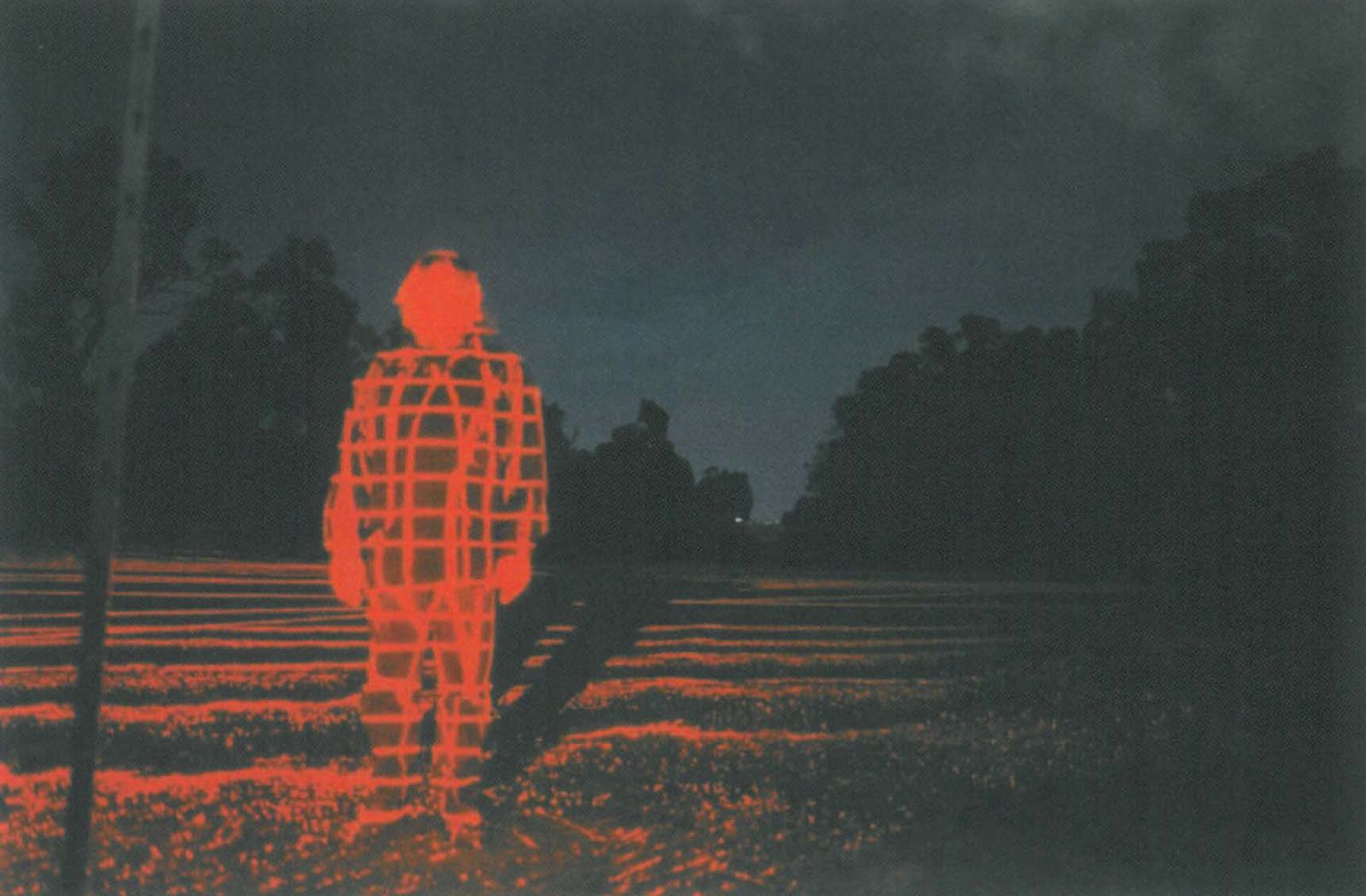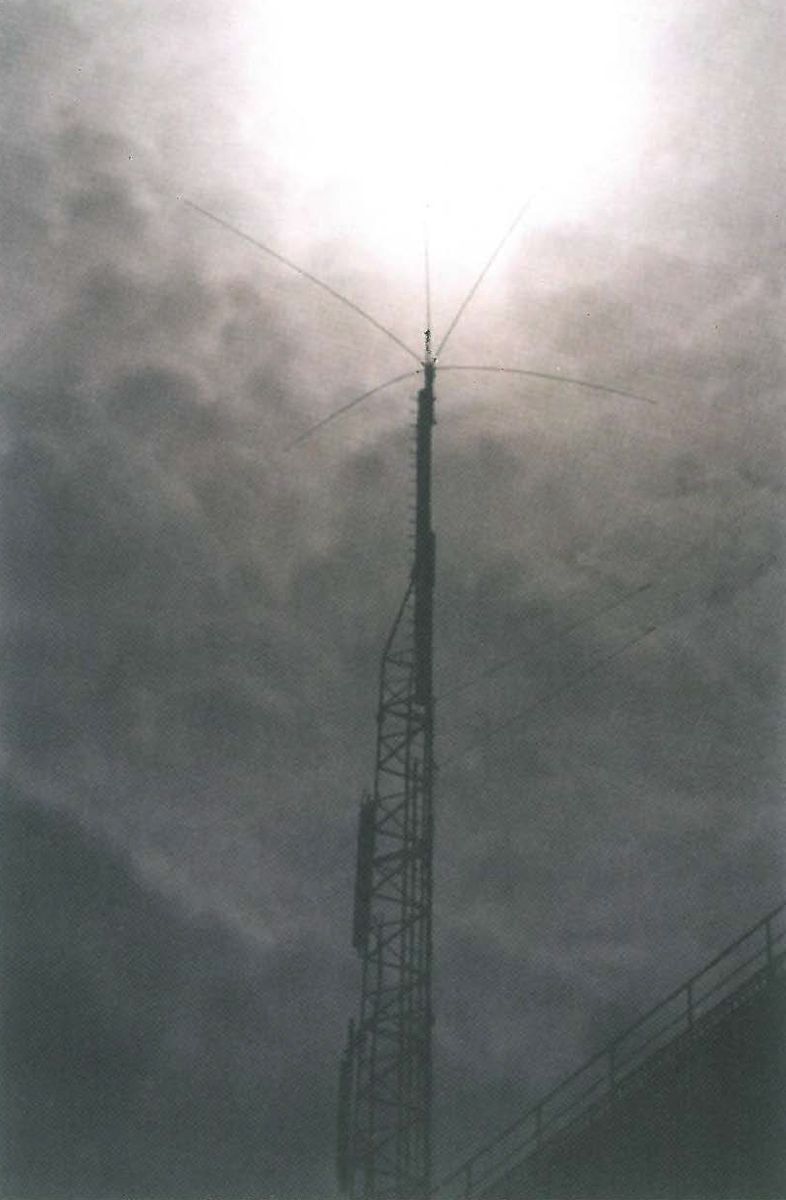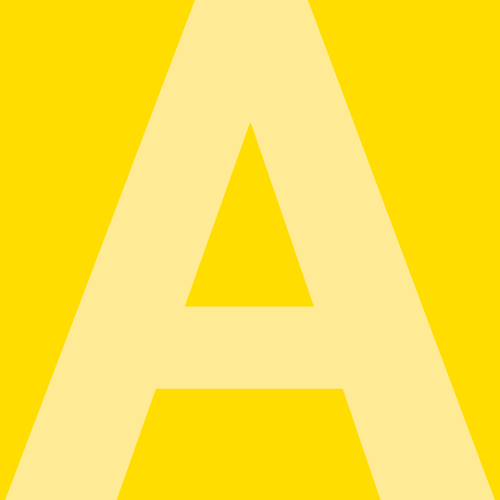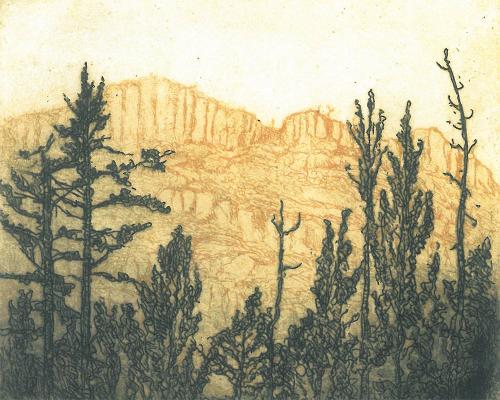
The eight artists invited by the new exhibition co-ordinator at PICA, Bec Dean, have responded to her theme - Mnemotechnics - 'the art of using unique physical elements of architectural space and landscape to trigger memory' and produced an exhibition which on entering generated a frisson of excitement. The most memorable pieces were created by sculptor Richie Kuhaupt working with computer scientist Geoffrey Drake-Brockman and by painter Lily Hibberd who incorporated film and music with her canvases.
Hibberd's vibrant work Burning Memory - Collapse (of dreams) dominated the large central space. The red and gold canvases depicted the violence of a raging inferno yet were not violent. The soft hazy focus of the pair of painted images rendered the experience surreal - indeed almost ethereal. They were several degrees of memory away from the associated black and white video loop which was screened as part of the work. This referenced Hitchcock's Rebecca as flames engulfed and destroyed a home, its contents and precious memories. A soulful piano score with performance by Matilda Robertson played over an accompaniment of crackling flames added to the otherworldliness and assisted in distancing the work from the violence.
Kuhaupt, who is well known for his cardboard section sculptures, and Drake-Brockman, who has a Master of Arts in addition to his Bachelor of Computer Science degree, started collaborating in 1998, taking out a commendation in the National Sculpture Award in Canberra in 2001. The new work Essentialiser: Lazercube III, explores the potential of laser mapping to create an interactive artwork. A large cube in the centre of an anteroom and four plasma screen panels on the wall are the basic pieces. The interior of the cube is gridded with infrared laser beams. When someone enters the box the laser beams map the body in three dimensions and these mapping lines are projected on the screen outside, moving when the subject moves. Three groups of people entered when I was there creating interesting and at times beautiful effects. Technical limitations also created bizarre images particularly with the first two - a father and son - the father wearing a dark shirt and the son dark trousers. The lasers could not read the dark clothing and so two half-body shapes wove in and out of each other with the horizontal lines always hurrying to catch up to the vertical. The next participant created a dance in her time inside. The graceful movement combined with a slight time lapse had a pair of dancers closely shadowing each other.
Static but also alchemical were Perth-based Erin Coates' duratransparencies over light boxes; Ragnorok I and Ragnorok II which were primary triggers for the exhibition. Depicted were two communications towers disappearing into the diffused light of violet-through-rose cumulus clouds. The apex of each vertiginously photographed structure was haloed in bright white light. The atmosphere was electric with possibilities.

Dean had selected works that: 'all deal in some way with the spaces that people inhabit, the imprint we leave on them and a kind of physical memory.' Matt Hunt's Inverted Panorama was shown on a split screen with two films of the circular train loop journey through Tokyo running side by side, one in the reverse direction to the other so that at one stage and one only they crossed. Close-up blurs of textured walls contrasted with longer focal lengths where the surroundings were identifiable - prompting questions of had we seen that section before - quite a memory teaser. Bruce Slatter's Signscape memories were more physical, culled from 'Boys Own' type books and arranged in serried ranks across the floor. The illustrations had been applied and fret-sawed from salvaged three- and five-ply with subtle colour variations lifting what could have been banal to a different level. The randomly arranged animals, aeroplanes, torsos etc looked for all the world like a pop-up book evoking memories of childhood.
Also playing with the memories of books was Annabelle Dixon whose strips of tickertape were inscribed with printing seen on the spines of books on library shelves. Others who contributed to this exploration of the nature of memory in relation to place were Eva Fernandez with reproductions of her parents' honeymoon snaps, Perdita Phillips with a soundscape of a conducted tour of a garden which suffered in the echoing space, and Anne Walton and Cat Hope's multiscreen and sound investigation of debris and detritus on the floor of a pine forest.












